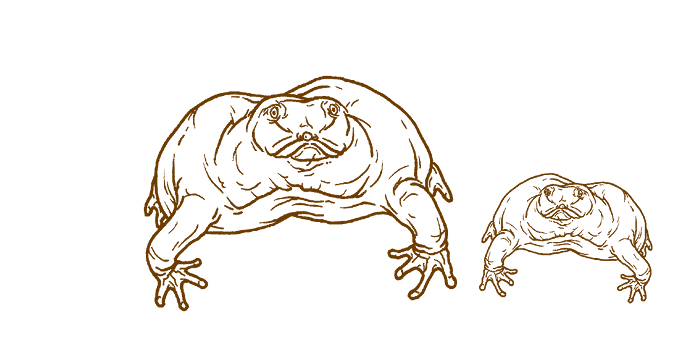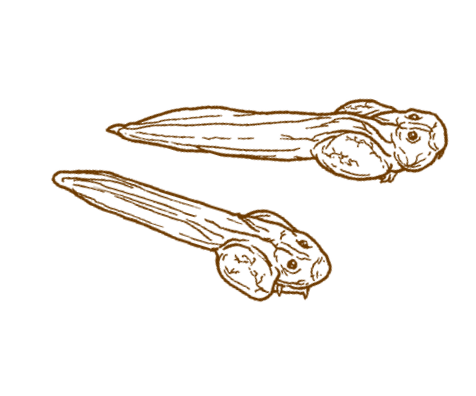
Purple
Pig-Nosed Frog
Nasikabatrachus sahyadrensis
(nay-sik-a-bat-rak-us sah-hya-dren-sis)

Purple pig-nosed frogs are petite amphibians: only 2 to 3.5 inches (6–9 cm) long. They weigh a mere 6 ounces (165 g) and have bulbous bodies and strange pointy snouts. Their heads appear to be too small for the rest of them! These frogs live underground, and their long noses are perfect for digging, while their short limbs, with hard knobs on the back feet, are ideal for pushing dirt aside. When they eat, their tongues poke out of their flexible, flap-like lower jaw.
Where They Live
The purple pig-nosed frog can be found in the Western Ghats, a mountain range in India, in the damp, loose soil of forests and other areas with dense plant life. They spend most of their lives as deep as 3 feet (1 m) underground. If you’re lucky enough to visit their territory during monsoon season, you can spot them in pond-like environments where they breed for a few weeks of the year.
What They Eat
Since these frogs spend most of their time underground, they’ve developed some specific traits to help them find food there. They have a sensitive nose and mouth that allow them to catch and eat small invertebrates and termites, and their tongues are specially designed to stick to and suck up these insects, making the purple frog a very quick eater.
Conservation Status
Endangered

This bizarre species of frog is extremely rare—only 135 of them have been found in the wild, and only 3 of those were female! In fact, scientists didn’t even recognize this species until 2003, although local people knew about the frogs and had even named them. They may have remained so obscure because they’re burrowing frogs, rarely seen aboveground. This also makes it difficult to know exactly where they live, how many of them there are, and what threats they face. However, deforestation probably presents the biggest threat to the purple pig-nosed frog. Ninety percent of their forest home has been logged, mostly to make way for farm crops like ginger, coffee, and cardamom.

Fun Facts
